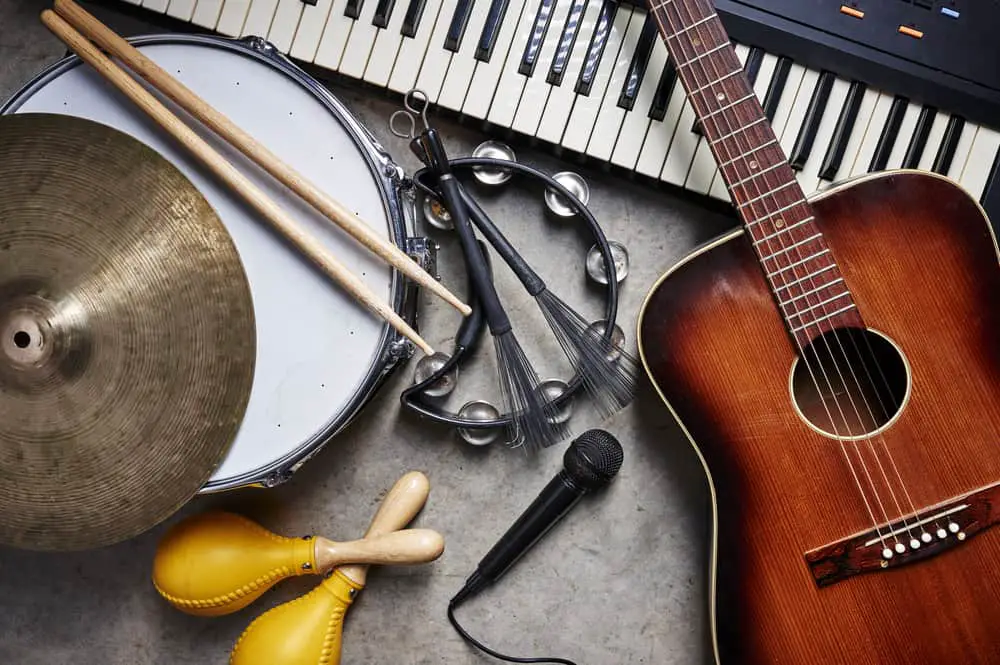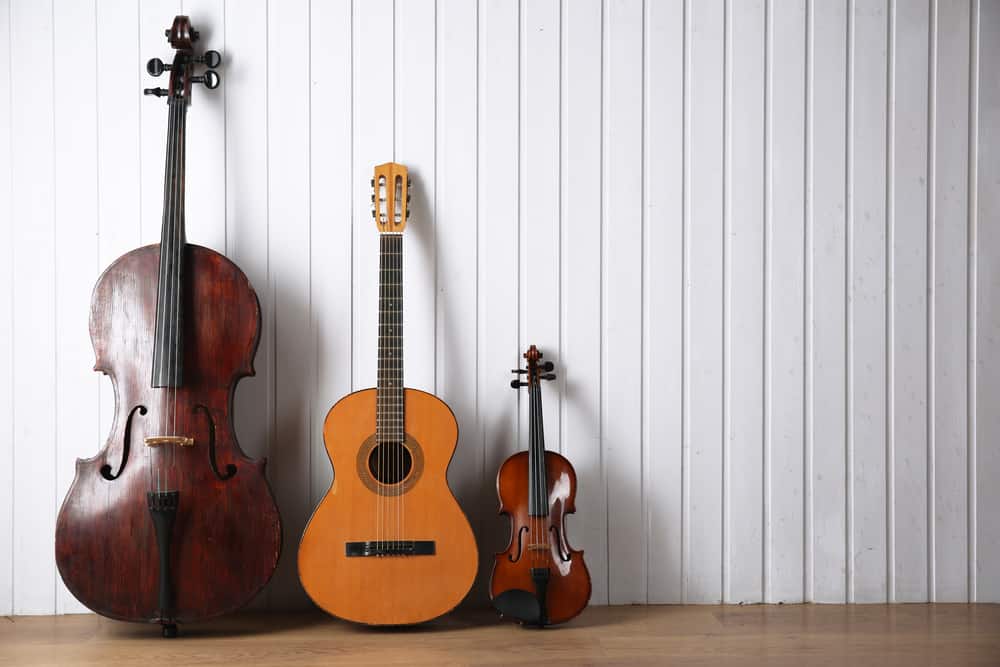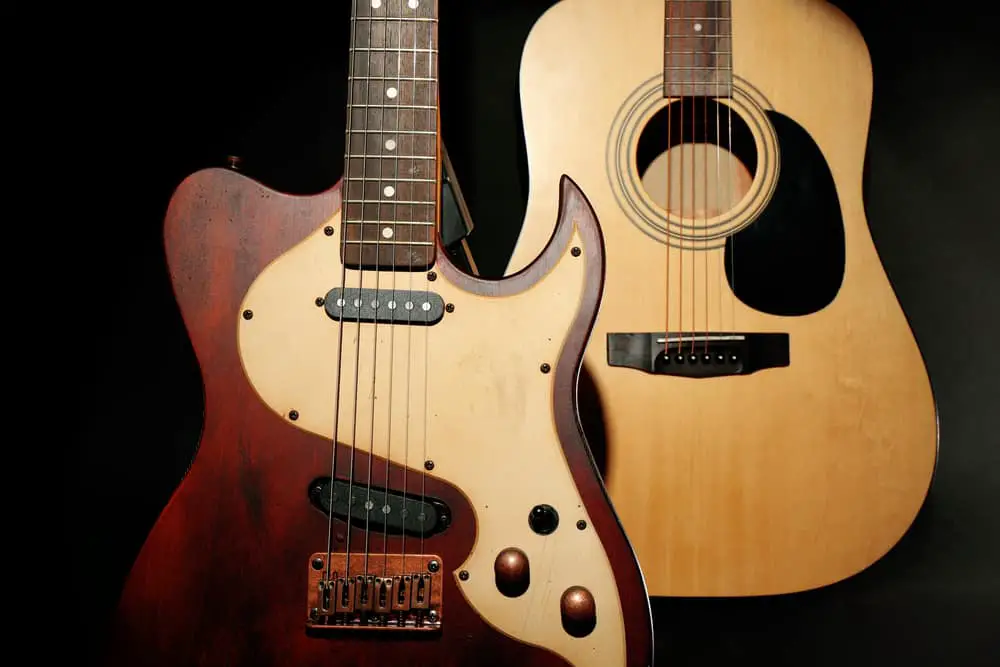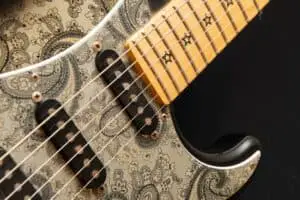
You’ve been playing the guitar, and you want to know more about its history, or perhaps you just need answers to your school homework. Either way, you’ve come to the right place. Instruments that make sound through vibrating strings have existed worldwide for millennia, and many stringed instruments were invented during those years.
You must know that musical instruments are divided into families based on some distinctive features. But did you know the piano is also a string instrument? String instruments are further divided into three types which we’ll look into later in this article. But first, what family is the guitar in?
The guitar belongs to the family of plucked string instruments – a subcategory of string instruments that produce sound when the strings are plucked. Other instruments in this category include the harp, ukulele, mandolin, sitar, pipa, and banjo.
Continue reading for a deep dive into the string family and everything you need to know about the instruments in this family.
History of String Instruments
String instruments were first used in burial ceremonies in ancient Mesopotamia 4000 years ago. Although they were initially used for religious purposes, their purpose soon extended to leisure.
In the Renaissance era, string instruments were made of the same materials they’re made of today. But they were sturdier and more reliable. Over the years, string instruments have undergone major modifications—the most recent being the invention of electric guitars and violins.
Types of String Instruments

String instruments are generally divided into three categories – the plucked, bowed, and striking string instruments. Let’s explore each of them in detail.
Plucked String Instruments
These are instruments that produce sound when their strings are plucked. Plucking causes the strings to vibrate, creating the sound we hear. The most popular instrument in this category is the guitar. The plucked string category is then further divided into three subcategories.
The Lute Family
The lute family is the most popular subcategory of plucked string instruments. The instruments in this family typically consist of a neck, wooden body, and strings that connect the two. Examples of instruments in this category include—you guessed right—the guitar, balalaika, and the mandolin.
The Harp Family
The harp family holds the title of the oldest group of string instruments. The first instruments in this family date back four thousand years ago to Mesopotamia. Instruments in this category include lyres and harps.
The Zither Family
The zither family resembles the lute family, but they lack a neck. The strings run along something called a soundboard instead. Instruments in this family are the dulcimer, kannel, and gusli.
Bowed String Instruments
You must have been wondering where the violin belongs. Violins, violas, and cellos belong to the family of bowed string instruments. They are similar to lutes in almost every aspect, only that they produce sound when a bow rubs across strings.
Striking String Instruments
This category of string instruments produces sound when the strings are struck. The struck strings produce mellow and rounded tones. The most popular instruments in this category are the piano and hammered dulcimer.
Types of Guitars

Guitars come in various types, each with several distinctive features. Below are the four most popular types.
Acoustic Guitar
Acoustic guitars generally have steel strings and an arched top. They come in various shapes and sizes, and they’re the most common type of guitar. Acoustic guitars need no peripheral equipment to function as they produce sound by the plucking of strings alone.
Electric Guitar
Electric guitars come in solid, semi-hollow, or hollow bodies. They produce little sound on their own but are usually amplified with amps and other electronic devices. Pickups convert the strings’ vibration into signals that are then transmitted to an amplifier through a cable or transmitter.
Bass Guitar
Bass guitars look like electric guitars with a longer neck and scale length. However, bass guitars sound different and are played with other musical instruments to give them a backing tune. They also have pickups and are often plugged into an amplifier.
Classical Guitar
Classical guitars have nylon strings that are often plucked to produce sound. They are used to play various musical styles, especially classical music. Their necks are usually wide and flat, so you can play a wide range of chords and scales.
Takeaway
Musical instruments are divided into families like string, woodwind, brass, and percussion. These families then have subfamilies. So remember that the guitar belongs to the plucked string instruments in the string family.
Frequently Asked Questions
Acoustic guitarists often hit the guitar body with their hands to establish a rhythm, so you could say it’s percussion. However, it doesn’t belong to the percussion family.
The electric guitar is only a type of guitar. As long as it uses strings, it belongs to the string family. And since it’s fingered or plucked, it’s a plucked string instrument.








